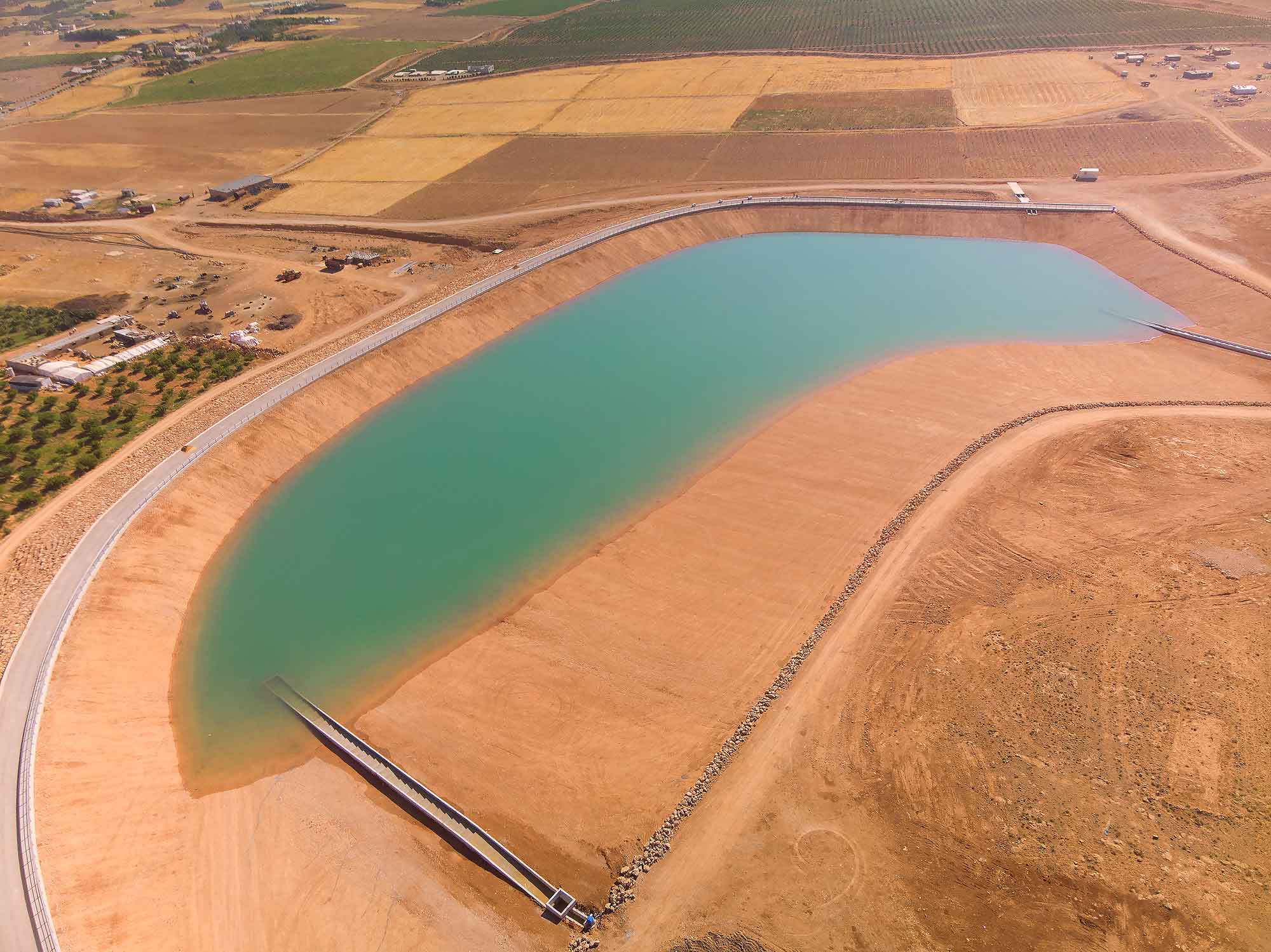These ruins are located under the above-mentioned ruins and overlook the plain even more. They are located in Baayoun and at the west of Sitt Balkis Canal. They are caves and wells that gather water.
Sitt Balkis Canal
This canal starts from Labweh, flows to the Syrian Desert and ends at the famous Hammam Abu Rabah known for its hot steam coming from the heart of the earth. Next to this site, there’s a castle known by the name “The Castle of Sitt Balkis”, which used to take water from this canal. The canal was named after it.
The Banjakiya mill
It is located on El-Qaa lands. It was built in the early Ottoman Empire and was known by the name “The mill of Mohamad Ben Manjak”. Mohamad Ben Manjak was the masoner of El-Qaa and the owner of the mill. Water from El-Qaa reaches the heart of the mill to start it, through a canal on a solid stone wall. Whenever the mill doesn’t need water, the latter shifts to a waterfall that drops vertically at an 8-meter height. This mill still exists till date.
Sitt Balkis Canal
This canal starts from Labweh, flows to the Syrian Desert and ends at the famous Hammam Abu Rabah known for its hot steam coming from the heart of the earth. Next to this site, there’s a castle known by the name “The Castle of Sitt Balkis”, which used to take water from this canal. The canal was named after it.
The Banjakiya mill
it is located on El-Qaa lands. It was built in the early Ottoman Empire and was known by the name “The mill of Mohamad Ben Manjak”. Mohamad Ben Manjak was the masoner of El-Qaa and the owner of the mill. Water from El-Qaa reaches the heart of the mill to start it, through a canal on a solid stone wall. Whenever the mill doesn’t need water, the latter shifts to a waterfall that drops vertically at an 8-meter height. This mill still exists till date.
Tal El Aswad Canal
This canal is located in Tal El Aswad in El Khanzir Valley (the Valley of the Pork). It is seen from the top of the Burj Valley at the borders between El Khanzir Valley and Banjakya. No one can tell where the canal begins and where it ends.
The White Canal
It is a tunnel beginning from the right bank of the Assi River that links the Beqaa to North Lebanon through Hermel. This 10-kilometer-long tunnel has circular openings on the surface, 50 meters apart from one another.
The Ruins of Naamat El Faw’a
It is the biggest and most famous of all ruins in El-Qaa. It is located next to Sitt Balkis Canal. This ruin was a small Christian village that hid metal coins, crosses and pottery that go back to the Byzantine Era. These materials existed until the beginning of the Civil War in 1975.
The ruins of Nasrani Valley
It can be accessed through the stream current of Damina Valley on the entrance of which is the valley. It currently holds the statue of the Virgin Mary. Two valleys fork from it: Debs Valley to the right and Kaf Valley to the left, and both end at the border with Ras Baalbek, while Nasrani Valley fork to the left at its turn. The ruins holding its name are located to its left and show no sign of previous life except for a few yards.
The ruins of Baayoun
These ruins are located at part of Baayoun. Pottery going back to the Byzantine Era was found in these ruins that spread all over the road linking Baalbek to Homs.
The fortress
There’s nothing left of it except the ruins between Banjakiya and Oum Hawakir
The tower
It was located on the hill of the valley known by its name, Bourj Valley (the tower Valley).
The mosque
There’s no trace of it except for the land where it was build, as well as its surrounding known today by the name Land of the Mosque. It was built by Emir Fakhr ElDine so that Muslim traders can pray
The gardens
They surround Saint George Church and spread from the east side of the customs office until the foot of the Anti-Lebanon mountain range. These gardens go back to the first half of the 19th century.
George Mikhael Farha Residence
It was built in 2018 of clay resembling to the old houses. It has a fireplace, an oriental living room, an oriental oven “Tannour”, and a water fountain, as well as an area to keep ants and insects away.
Things to do
Traditional cuisine
El-Qaa is known for its authentic Lebanese cachet. This village remains very attentive to the Lebanese traditional cuisine. In its old narrowed streets you can find old bakeries, butcheries and kebbe troughs that the big other cities will not be able to reflect them in a proper and genuine way









